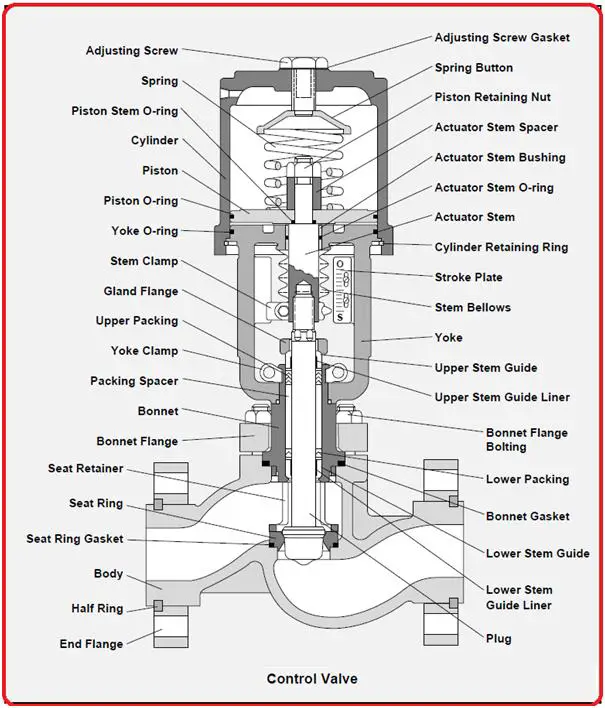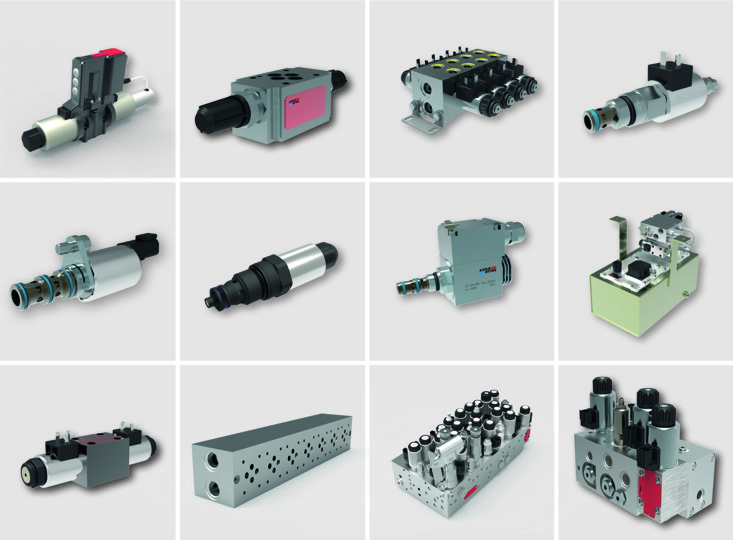Checking out the Functionality of Modern Control Valves in Industrial Applications
Checking out the Functionality of Modern Control Valves in Industrial Applications
Blog Article

Maximize Energy Financial Savings and Comfort With Advanced Building Automation Controls
In the world of modern-day architecture and facility administration, the integration of advanced building automation manages stands as an essential innovation. The convergence of innovation and sustainability has birthed a new era where power performance, convenience optimization, and functional streamlining are no longer obtainable truths but distant desires. By using the power of automation, structures can adapt, react, and advance in means that were when unimaginable. The capacity for substantial power financial savings and improved comfort is not just a pledge however an opportunity waiting to be satisfied. This standard change in structure monitoring holds the vital to opening a globe where ecological conscientiousness and passenger health harmoniously exist together within the walls of our structures.
Power Efficiency Conveniences
Energy efficiency advantages can substantially decrease energy intake and functional expenses in buildings. By applying energy-efficient practices and innovations, structure proprietors and drivers can accomplish significant financial savings while also adding to environmental sustainability. One of the main advantages of enhancing power efficiency in structures is the reduction of utility costs. Energy-efficient systems, such as innovative building automation controls, can optimize making use of sources like lighting, heating, and air conditioning, causing reduced power expenses with time.
Additionally, enhanced energy effectiveness can prolong the life expectancy of structure equipment and systems. By running more effectively, HVAC systems, lighting fixture, and other building elements experience less wear and tear, causing decreased maintenance and substitute expenses. Additionally, energy-efficient structures typically regulate greater residential property worths and rental prices, giving long-lasting financial benefits to proprietors.
Furthermore, energy effectiveness can improve owner comfort and productivity. Correctly managed interior settings with ideal lighting and thermal conditions produce a more positive and helpful work space, causing boosted staff member satisfaction and performance. On the whole, the energy effectiveness benefits connected with sophisticated building automation controls are diverse, including price savings, environmental stewardship, and owner well-being.
Improved Convenience Control
Enhancing convenience control in building environments requires an innovative combination of advanced automation systems for optimum owner wellness. By making use of advanced structure automation controls, centers can customize the indoor atmosphere to meet the certain requirements and preferences of residents. These systems enable accurate guideline of temperature, air flow, and lights, developing a comfortable and effective environment. Owner satisfaction and productivity are carefully linked to thermal convenience, making it necessary to have systems in area that can adapt to altering conditions in real-time.
Boosted convenience control surpasses basic temperature level modifications. It includes functions such as individualized settings, occupancy sensors, and all-natural light usage to create a receptive and dynamic setting. By including these sophisticated controls, buildings can not just boost convenience but additionally improve power efficiency by optimizing system operations based upon real occupancy and usage patterns. Inevitably, prioritizing passenger comfort through sophisticated automation systems results in a more delightful and much healthier interior environment.
Operational Performance Improvements

Moreover, the application of real-time surveillance and analytics devices makes it possible for building operators to determine energy inadequacies and operational abnormalities promptly. By constantly keeping an eye on energy usage patterns and system performance metrics, adjustments can be made in real-time to enhance energy consumption and guarantee peak functional effectiveness. control valves. Additionally, incorporating need response techniques right into structure automation controls can additionally improve operational effectiveness by dynamically changing power use based upon grid conditions and prices signals
Indoor Climate Optimization
Reliable indoor environment optimization is an essential aspect of structure automation controls, ensuring residents' comfort and health while optimizing power financial savings. By using sophisticated sensing units and controls, constructing automation systems can constantly change and keep an eye on temperature, moisture degrees, air high quality, and ventilation to develop an ideal indoor environment. Maintaining consistent and comfortable conditions not just enhances occupant complete satisfaction but also boosts efficiency and general well-being.
Interior climate optimization additionally plays a crucial role in power efficiency. By fine-tuning air flow, cooling, and home heating systems based upon real-time data and tenancy patterns, constructing automation controls can considerably minimize power usage - control valves. As an example, carrying out strategies such as demand-controlled ventilation and thermal zoning can aid decrease energy waste while ensuring that each location of the building gets the required conditioning.

Sustainable Atmosphere Development
Structure automation regulates not only optimize interior climate conditions for power important link performance and occupant convenience however additionally lay the foundation for producing a sustainable setting with strategic administration of systems and sources. By integrating advanced structure automation technologies, such as sensing units, actuators, and smart software, facilities can keep an eye on and change power use in real-time to lessen waste and lower their carbon footprint. These systems make it possible for predictive maintenance, determining potential problems prior to they escalate and enhancing tools performance to enhance long life and efficiency.
Moreover, lasting setting development extends beyond energy monitoring to include water preservation, waste decrease, and indoor air quality enhancement. Building automation controls can regulate water usage, discover leakages, and make certain appropriate waste disposal practices, adding to general sustainability initiatives. In addition, by regulating and checking ventilation and purification systems, these technologies enhance owner wellness and productivity while lowering power intake associated with HVAC procedures.
Final Thought
To conclude, advanced structure automation controls deal substantial benefits in regards to energy financial savings, convenience control, functional effectiveness, interior climate optimization, and producing a sustainable environment. By implementing these controls, buildings can achieve optimum efficiency while lowering power intake and boosting resident convenience. It appears that using advanced automation modern technology is critical in boosting structure efficiency and creating a more lasting future.
Power efficiency advantages can substantially minimize power intake and functional expenses in structures. In general, the energy performance benefits associated with innovative building automation controls are complex, encompassing cost savings, ecological stewardship, and resident wellness.
In addition, including need navigate to these guys response approaches into structure automation controls can even more enhance functional effectiveness by dynamically readjusting energy usage based on grid conditions and prices signals.
Building automation regulates not only optimize indoor climate problems for power effectiveness and occupant convenience yet also lay the foundation for creating a sustainable setting through critical monitoring of systems and resources.In conclusion, progressed building automation controls offer significant benefits in terms of energy financial savings, convenience control, operational performance, interior environment optimization, and producing a sustainable atmosphere.
Report this page